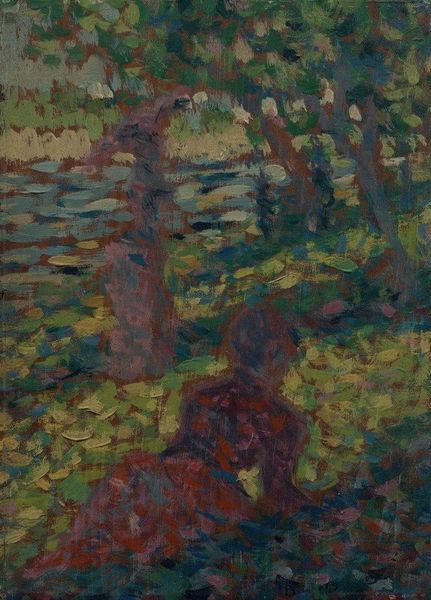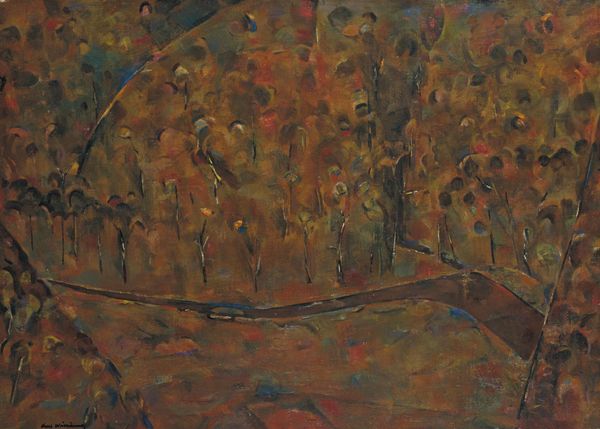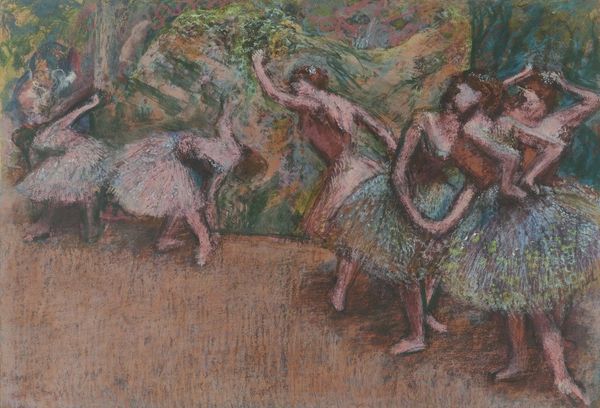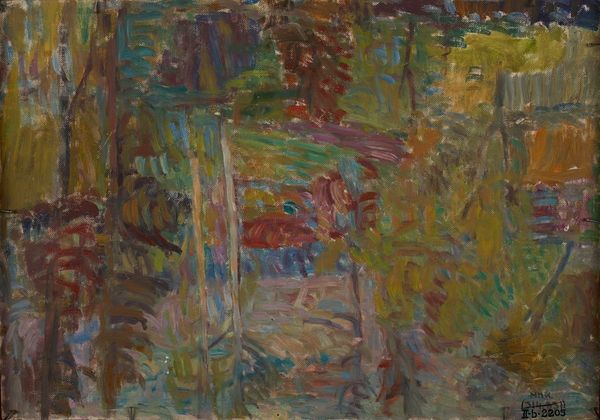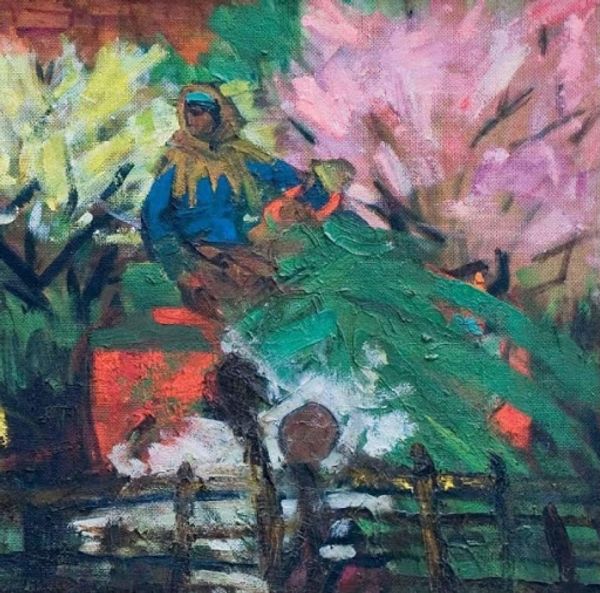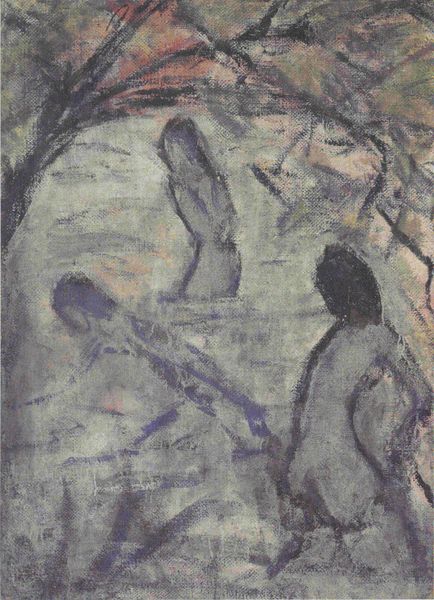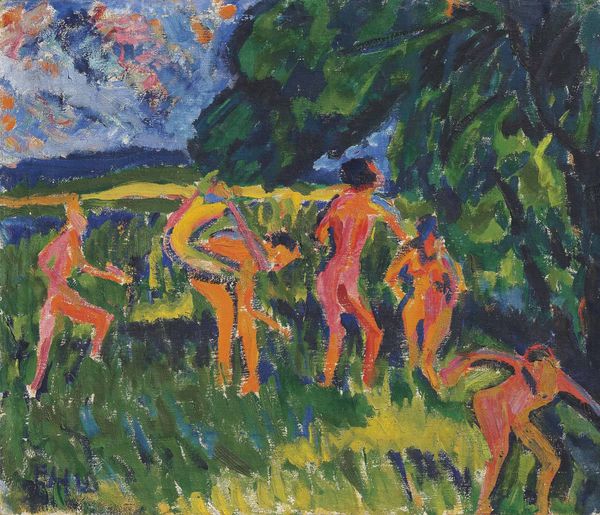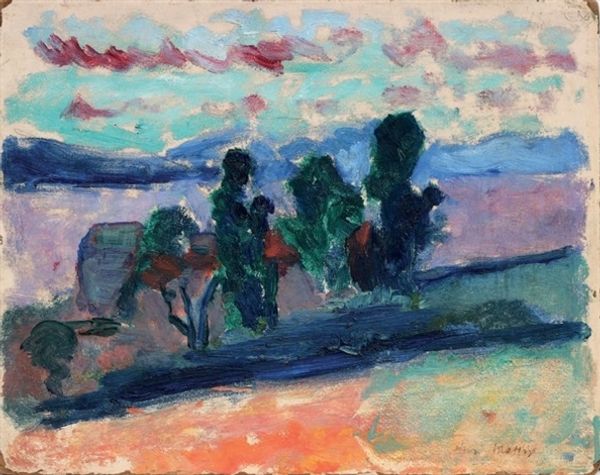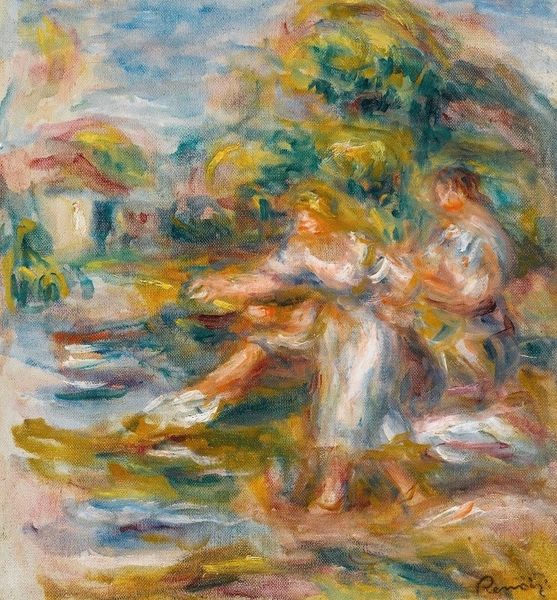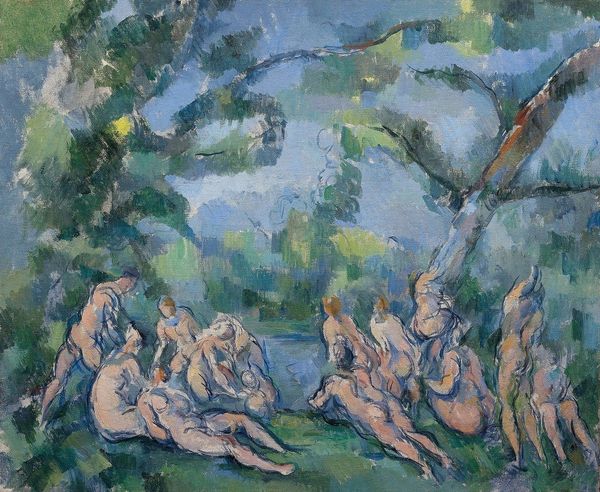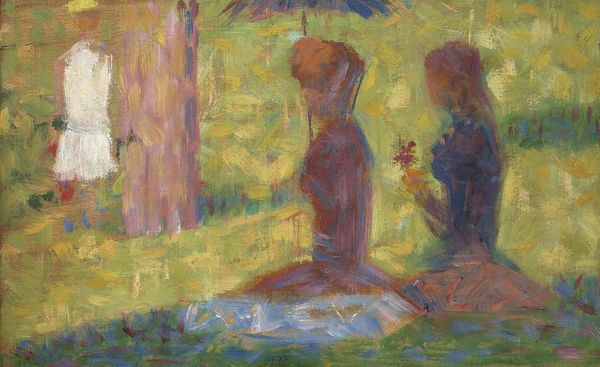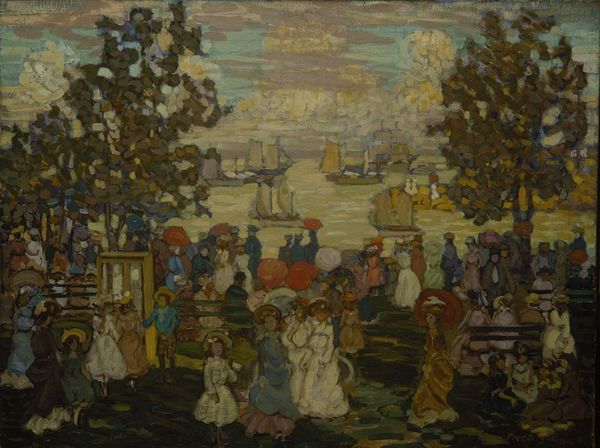
Copyright: Public Domain: Artvee
Curator: Maurice Prendergast's "Sunday in the Park," dating from around 1910 to 1913, offers an intriguing scene of leisure rendered in oil on canvas. Editor: The first thing that strikes me is how hazy and dreamlike the whole composition appears, softened, almost as if the paint is actively trying to escape from form. It is giving memory or distant wish. Curator: Precisely. The visible brushstrokes contribute significantly to this effect. Prendergast utilizes short, broken touches of color, a hallmark of Impressionist and Post-Impressionist techniques, building up the forms rather than defining them with hard outlines. Look closely at how the trees become dappled areas of emerald, ochre, and sapphire. Editor: Those dabs of color remind me of pointillism, though clearly less systematic. I'm interested in how Prendergast seems to be portraying the performance of leisure here. Who gets to be idle? Who can move freely and safely through public space? There's a strong sense of social stratification embedded within the scene's apparent casualness. Curator: Undoubtedly. The figures themselves, primarily women adorned in finery, are stylized rather than realistically depicted. They are figures moving, figures together, forming this impression of an upper class. It's fascinating to consider how he transforms the individuals into motifs. We may interpret their dresses by his unique use of color here as not representative of their wealth but almost making it an art object that has color themes and meaning. Editor: I would definitely want to ask about class, privilege, gender roles in his society. Curator: Yes, he makes commentary, subtly highlighting societal structures through the figures but making the focal point about how he translates figures in his paintings through his own eye for color. His work challenges, even resists a singular, conclusive reading. Editor: Agreed. It leaves us contemplating the interplay between individual experience and collective identity. This invites viewers to consider their own roles within public spaces, both historically and in the present day. Curator: Indeed, examining the forms and the arrangement invites discussion around Prendergast’s broader context within art history and its ties to European modernism and the aesthetics of subjective interpretation. Editor: And also what art's responsibilities are within a world often at odds, always within tension. What it tells us about our world, its freedoms and constrictions, but more importantly, our responsibilities toward others, making his paintings so contemporary, so relevant to conversations about inclusion and belonging today.
Comments
No comments
Be the first to comment and join the conversation on the ultimate creative platform.
